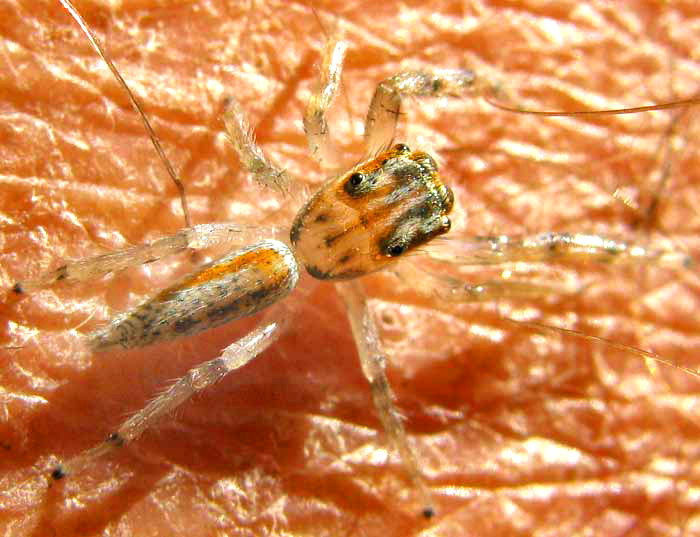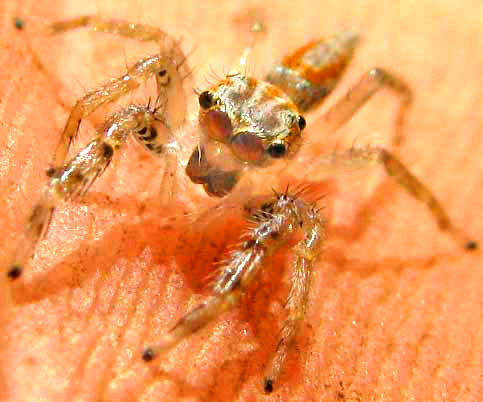Excerpts from Jim Conrad's
Naturalist Newsletter

from the January 16, 2011 Newsletter issued from Hacienda Chichen Resort beside Chichén Itzá Ruins, central Yucatán, MÉXICO; limestone bedrock, elevation ~39m (~128ft), ~N20.676°, ~W88.569°
JUMPING SPIDER
In late afternoon I sat reading beside the hut when a certain tickling came onto my leg. I ignored it but then it climbed onto my arm holding the book. It was the jumping spider shown on my well weathered skin above.
A head-on view clearly showing six of its eight eyes is shown below:

Those pale brown, goggle-like disks facing forward are eyes, the four darker bumps along the top of the head are eyes, but really I'm not sure where eyes #7 and #8 are. I just read that "All jumping spiders have four pairs of eyes."
It took awhile to get those photographs. As soon as my lens approached the little being close enough for a shot, he'd jump onto the lens. It happened several times so clearly this was something he felt he needed to do.
I've enjoyed good luck getting help identifying my tarantulas, spiders and other arachnids at the free, online forum called Arachnoboards, accessible at http://www.arachnoboards.com/ab/.
Therefore, I uploaded there the two photos you just saw, waited several days, but -- much in contrast to previous posts -- no-one attempted to name my unknown, not even to subfamily. From this I can guess that the species doesn't occur in southern Florida. Species also occurring in southern Florida often are known to US hobbyists and specialists who help me out. Maybe we have a Yucatan specialty species here.
So, all I can say is that this is a jumping spider, which isn't saying much, since the Jumping Spider Family, the Salticidae, is the largest of all spider families, containing more than 500 genera and some 5000 described species. About 13% of all spiders on Earth are jumping spiders.
And you might guess from the pictures that a big thing about jumping spiders is that their vision is very sharp. They need that for hunting and navigating. They don't produce webs, but rather stalk their prey, and pounce on it.